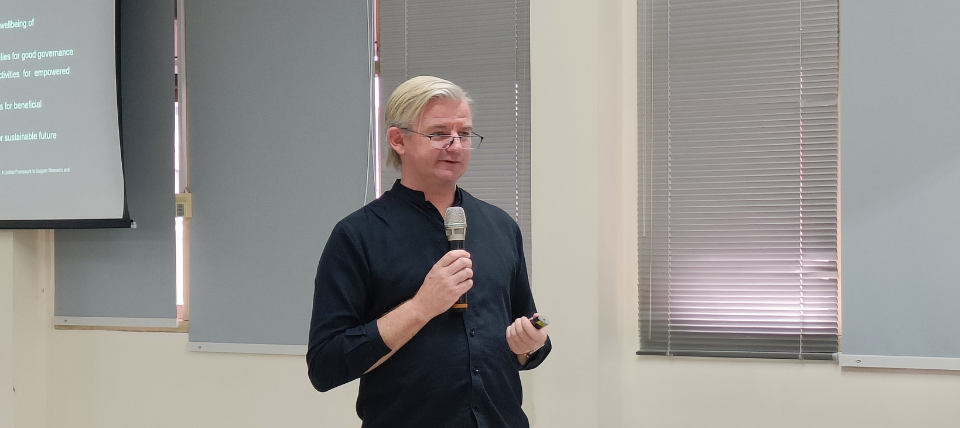Evolving from Social Design to Co-design in Empowering Communities for Sustainable Solutions

Jakarta, 30 September— The transition from social design to co-design has evolved over several decades, reflecting significant shifts in design methods and the ways designers collaborate with communities to address complex societal challenges.
Dr. Danny Butt, Senior Lecturer in Interdisciplinary Practice at the Victorian College of the Art, The University of Melbourne, engaged our students in a discussion how design methods are increasingly being used to drive social innovation in the art world and build connection with clients and communities, during his lecture at our Syahdan Campus.
The shift in design methods dates back to the 1950s and 1960s, when the Ulm School of Design in Germany began adopting a process-driven approach to design, rather than concentrating solely on product outcomes.
Design, as defined by Dr. Danny, is a flexible process that enables you to adapt your methods depending on the situation. This process follows a series of steps, including problem identification, brainstorming solutions, prototyping, testing, and refining until the right solution is developed, as outlined by Tim Brown in his 2009 book Change by Design: How Design Thinking Transforms Organizations and Inspires Innovation.
(Photo Editor: Mufti Warits)
In the context of social design, these steps are essential, as designers work closely with communities to devise solutions that drive meaningful social change. The movement gained momentum in the 1970s, as designers began to embrace their social responsibility by offering their skills to those unable to afford professional design services.
“The tendency in social design to prioritize solutions over exploring the design process can be viewed as a limitation. To address this concern, over the last decade, designers have increasingly adopted co-design, a method where designers work closely with clients and stakeholders throughout each phase, ensuring a more collaborative and iterative approach,” Dr. Danny explained.
How does co-design lead to greater social impact? Ingrid Burkett’s 2012 study Introduction to Co-Design underscored the significance of incorporating clients and stakeholders in the design process to foster social innovation. Leveraging their insights as end-users enables them to be recognized as co-designers, making co-design an effective tool for empowering marginalized voices, promoting social equity, and creating sustainable solutions.
(Photo Editor: Mufti Warits)
For example, the Australia-Indonesia Museum (AIM) project initiated by the Southeast Asia Museum Services (SEAMS) exemplifies the co-design between Australian and Indonesian museum professionals. This initiative has been running since 2021, deepening long-term partnerships between these two countries by promoting their unique cultures and blending traditions through co-curated exhibitions, joint research projects, training, and knowledge exchange. By adopting a co-design approach, this project has raised awareness and deepened the engagement between Indonesian and Australian communities, fostering stronger ties through shared design experiences.
As we delve into the changing design processes through this lecture, we gain valuable insights into how co-design fosters social innovation by forging stronger connections between designers and communities, enabling co-created solutions in addressing social challenges. Thereby, this academic collaboration with The University of Melbourne exemplifies BINUS University’s mission to empower society and aligns with our vision of becoming a world-class university that contributes in building and serving the nation.
(Words by Mita Adhisti/Editor: Hamzah Ramadhan)



